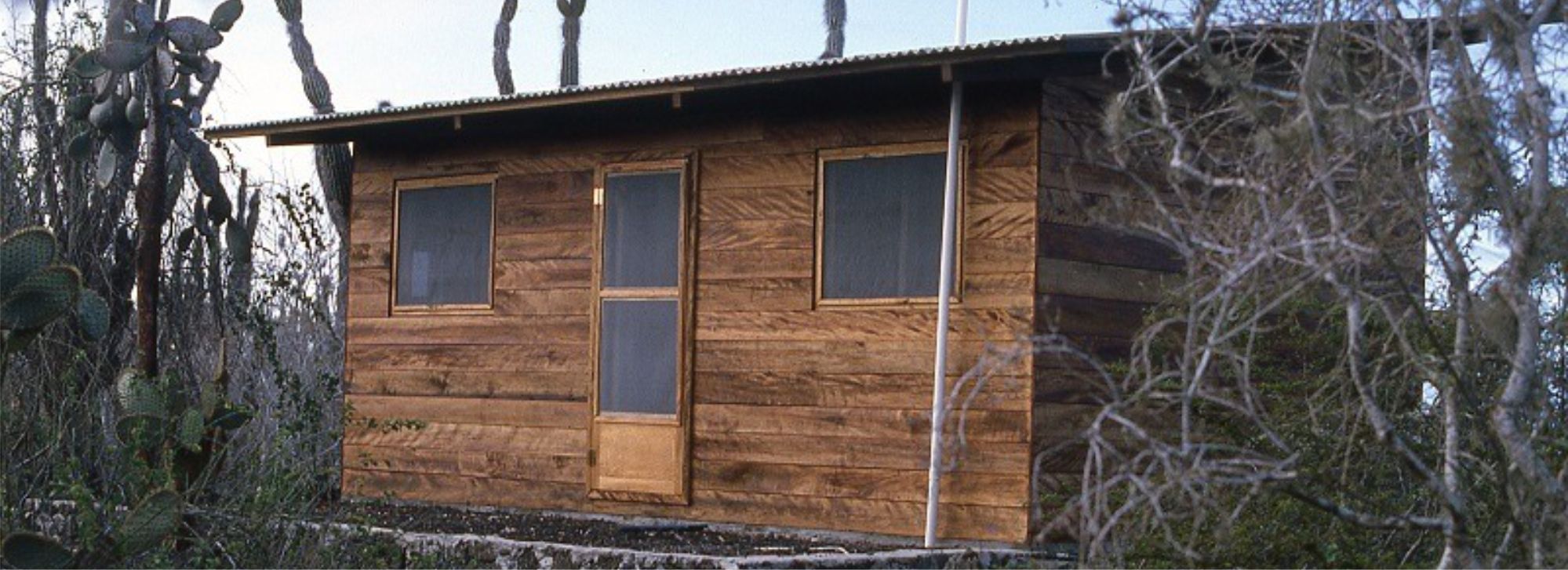The seismograph's cabin
The layout of the Charles Darwin Research Station (CDRS) includes a number of buildings, spaces and roads developed progressively over time, since the institution began to be built in 1960.
Some of them have been changing their functions and, therefore, their structures, which, in addition, have been enlarged and repaired to avoid the wear and tear of a humid climate and a coastal environment. Others, unfortunately, have disappeared or are in a state of advanced deterioration.
Such is the case of a small wooden cabin located at the edge of the road that leads from the main buildings of the Station to the tortoise breeding pens. Built with plank walls and a sheet metal roof, the rains and woodworms have taken their toll on its materials, and it appears to be in an advanced state of abandonment.
However, it was not always like this. A handful of photographs from the 1980s show it in good shape.
As with many other elements in the history of the CDF, finding information on the cabin has proven to be extremely difficult. It was necessary to resort both to very scattered fragments of documentation and to institutional oral tradition; the latter is sometimes confusing, because of the many conflicting versions that emerge on the same topic.
It appears that two similar cabins were built on an undetermined date, of which there are basic architectural sketches in the CDF Archive's collection of plans and blueprints. One of them was installed in the tortoise reserve that the CDF managed on the highlands of Santa Cruz Island in the 1980s; that cabin was used by researchers who wished to observe the reptiles up close, and appears, for example, in some of Linda Cayot's earliest images in Galapagos. The other was, as mentioned above, near the CDRS tortoise breeding pens in Puerto Ayora.
The latter appears to have served a number of functions. Some of the older CDF workers recall that the space was used to store food for the tortoises; others, that it served for some time as a storage area for various scientific materials. And, finally, most agree that the old CDF seismograph was installed there.
This seismograph —which deserves a text of its own, given the abundance of archival documents that record its eventful history, including seismograms— was one of the first scientific devices to be installed at the CDRS. According, again, to local oral tradition, the instrument changed location until, due to the numerous failures it presented and the difficulty (and sometimes impossibility) of repairing them, it was abandoned.
Apparently, the cabin ended up being used as a shed for various materials until its use was discouraged due to its structural instability. Despite its poor condition, the building continues to be part of the tangible heritage of the CDRS, and its rehabilitation as a potential space for receiving visitors has been considered.
[The photograph that illustrates this text corresponds to a slide by Godfrey Merlen, without data, preserved in the CDF Archive].
Text & picture: Edgardo Civallero (edgardo.civallero@fcdarwin.org.ec).
Publication date: 1 October 2023
Last update: 1 October 2023
